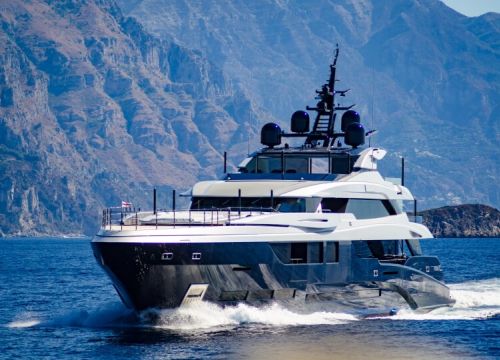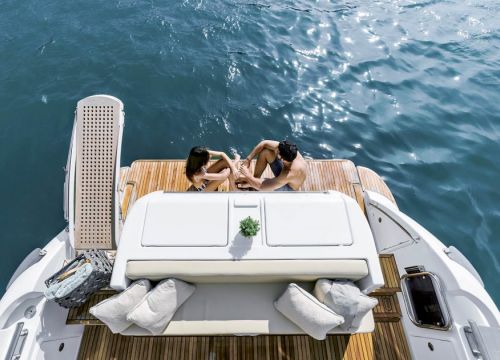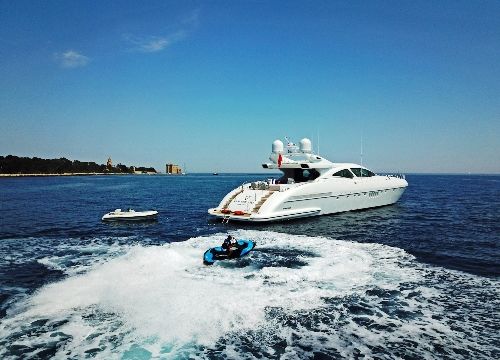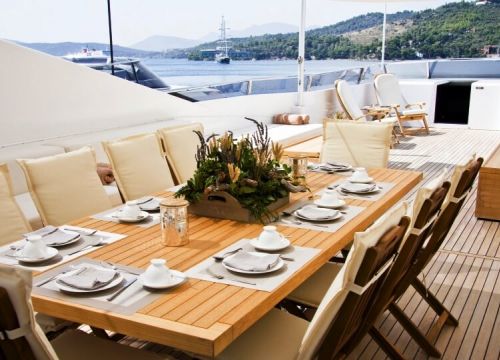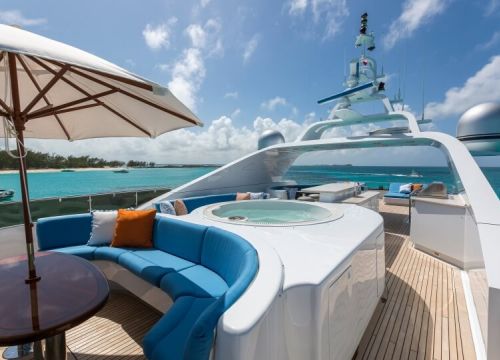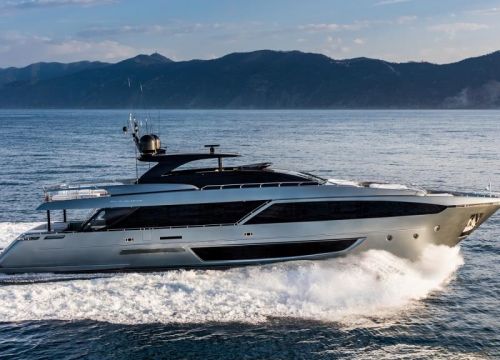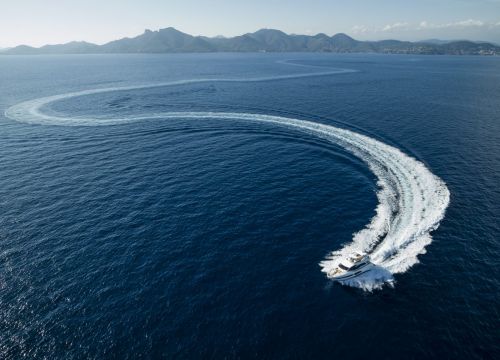All you need to know about yacht charter prices

In the post below, we will specifically analyse yacht charter prices in France. However, the same analysis applies to all the other destinations we offer, such as Italy, Greece, Spain or Croatia. The only variable is the percentage of VAT, which varies from one country to another. Do not hesitate to contact us to receive detailed information on a particular charter destination.
If you are interested in a French Riviera yacht charter, understanding the costs involved can sometimes be confusing. The 2 key things to consider are the base charter fee and what you will have to pay in addition. Your charter planner will be able to give you an accurate estimate of all the costs involved but to start with, here is an in-depth look at the pricing of a French Riviera yacht charter. This should help you estimate the cost of your next French Riviera yachting vacation.
The basics of yacht charter prices
The total price of a yacht rental in the south of France includes 3 elements:- the charter fee
- the VAT (Value Added Tax)
- the APA (Advance Provisioning Allowance)
Delivery/re-delivery fees may apply if you ask to embark/disembark in a port that is not the homeport of the boat. If the cruising distance is short, the delivery/re-delivery fees may be directly deduced from the APA account.
The charter fee
The charter fee is a fixed price determined by the yacht owner and the central agent representing the vessel.What factors impact the charter fee?
Can dates influence the charter fee?
What is included in the charter fee?
The charter fee includes in particular the use of the yacht, with all her equipment in working order, and the employment of her crew.
| INCLUDED | NOT INCLUDED | |
|---|---|---|
| Yacht | X | |
| Crew (wages & food are included) | X | |
| Insurance for the yacht and her crew | X | |
| Water toys (non-motorized) | X | |
| VAT & other local taxes | X | |
| Fuel for the main engine, generators, tender & motorized toys | X | |
| Food & drinks | X | |
| Dockage & port fees | X | |
| Water, electricity & communications | X | |
| Crew gratuity | X | |
| Transport to/from the yacht | X |
How is the charter fee calculated?
Charter fees are set per week. However, a yacht rental can last for any duration under or over 7 days – in the summer note that some Owners do not accept charters of less than 7 days. Charters of less than 7 days are calculated pro-rata against the weekly charter fee divided by 6 and multiplied by the number of days. Charters over 7 days are calculated pro-rata against the weekly charter fee divided by 7 and multiplied by the number of days.
The VAT
VAT is commonly charged on the charter fee when cruising European territorial waters. Rates differ considerably depending on the embarkation port and the cruising itinerary. Your charter planner will provide information on the latest tax situation for a French Riviera yacht charter or in any other country.
How is the VAT calculated for a French Riviera yacht charter?
For any private yacht charter starting in a port on the French Riviera and therefore in French territorial waters, the VAT will apply at a rate of 20% calculated on the charter fee. However, if the final cruising itinerary includes cruising in international waters, the VAT will only apply on 50% of the charter fee - resulting in a 10% VAT rate. Depending on your cruising itinerary, your charter planner will advise on the applicable rate.
Quick example:
Charter fee: EUR 12,000
Standard VAT: EUR 12,000 x 20% = EUR 2,400
Reduced VAT: (EUR 12,000 / 2 ) x 20% = EUR 1,200
The APA
APA stands for Advance Provisioning Allowance. Sometimes clients ask us for an « all-inclusive » quote. However, under MYBA charter contracts – commonly used on the Côte d'Azur and in the Mediterranean in general - the price structure for yacht charters will always be « plus expenses ». But it is important to understand that this is actually beneficial to the Charterer. The cost of extras can indeed vary widely from one Charterer to the other. With a « plus expenses » contract you pay at cost for what you consume i.e. fuel is charged only if it is consumed, food and drinks are bought by the crew to meet with your exact requirements etc…
What is the APA?
Typically, the APA covers all the expenses that are not included in the charter fee such as fuel, food, drinks, port fees… (see details below). The APA is calculated based on the charter fee and paid by the Charterer prior to the charter – usually 1 month before. The money from the APA is then transferred to the charter yacht so the Captain can provision and fuel the boat before your embarkation. Clearly, the amount spent on operating expenses depends to a large extent on your specific requirements: your cruising itinerary, your preferences in terms of food and drinks, your call to spend the night in a port or at anchor (not possible on smaller vessels) … The final expenditure is known at the end of the charter but you can ask the Captain for an up-to-date summary of the accounts at any time.
How is the APA calculated?
The APA is usually calculated at 30% of the charter fee. However, in some cases, the percentage may increase to 40%. For a day charter, if the itinerary involves a lot of cruising, we will calculate a 40% APA to avoid any bad surprise at the end of the day. Similarly, for a large group charter, if you are planning to enjoy food and drinks onboard, we will also calculate a 40% APA. Another specific case is when some older yachts may have a very low charter fee, in this case – the APA being calculated on the charter fee -, we will need to increase the APA percentage. The same applies for open yachts that burn a lot of fuel.
The most important thing to bear in mind is that there is no mark-up in the APA calculation so you pay everything at cost and you are more than welcome to check the receipts kept by the Captain onboard.
At the end of your charter, the Captain will present you with the final statement of the APA. If you have advanced too much money, you will be reimbursed in full for the difference either in cash by the Captain or via bank transfer by your charter planner. If the APA is in debit i.e. the Captain is missing funds, you will be asked to pay for the difference in cash before disembarkation or, with the Captain’s authorisation only, to pay by bank transfer directly to your charter planner.
What is covered by the APA?
If you refer to the table and explanations above, you’ll have figured that the APA covers all expenses that are not included in the charter fee – just as you would pay for extras on top of booking your room in a hotel. All of these expenses are clearly outlined in the MYBA charter agreement and your charter planner will give you all the details before booking. Here are the most important ones.
Fuel
Depending on how much the boat sails and at what speed, fuel expenses can be more or less significant. Sitting at anchor will also require fuel to power the generators while shore-based electricity, when berthed in a marina, is also a supplement (see below). Remember that fuel is also charged for tender operations and motorized water toys.
Food & Drinks
Prior to your yacht charter, your charter planner will provide you with a preference list so you can indicate what you would like to have onboard in terms of food and drinks. Food & Drinks is one of the biggest extra cost and can vary considerably from one charter to the other. If you plan to dine on champagne, caviar and lobster every day, you can assume that your final bill will be higher than the Charterer asking for classic Mediterranean cuisine with modest wine.
Dockage
Dockage fees can vary significantly from one place to another. A front-row dock in St Tropez will be exorbitant in peak season while a standard berth will cost very little in different Riviera areas.
Crew gratuity
The crew gratuity is another additional expense to consider when booking a crewed yacht charter. The standard charter fee never includes the gratuity. If you’ve enjoyed the service of your crew and would like to extend a gratuity, you can either deduce the tip from the balance of the APA or - if there is little or no APA left - give an envelope to the Captain before disembarking from the vessel. The gratuity is left at the Charterer’s discretion but usually represents between 5 and 15% of the charter fee.
How to reduce the overall cost
The list of extra expenses may seem daunting but there are many ways to reduce the final bill of your south of France yacht rental.
Select the right yacht
When receiving the different options for your French Riviera luxury yacht charter vacation, pay attention to fuel consumption as well as cruising speed. A high-speed sporty yacht will have the advantage of covering a lot of ground fast – but consuming a lot of fuel – while a sailing yacht will slash the fuel bills – but limit the cruising. Depending on your preferred itinerary, ask your charter planner for advice.
Charter in the shoulder season
If you’re planning to charter a yacht on the French Riviera the months of May, June, September and October are particularly interesting in terms of cost. Charter fees usually drop and it is easier to negotiate a good deal. As regards to the weather, June and September are particularly lovely. Temperatures in May and October are more fluctuant but the weather is usually great.
Take opportunity of anchorage spots
Berthing fees in French Riviera ports can get pretty expensive in the summer. To reduce the cost of your yacht charter, the yacht can stay at anchor overnight. There are fabulous anchorages along the coast from St Tropez to Saint-Jean-Cap-Ferrat. Your charter planner can also recommend lesser-known ports that charge lower rates. Bear in mind that spending the night at anchor is only possible on larger vessels, weather permitting and with the Captain’s approval.
Fill out your preference questionnaire thoroughly and asap
Prior to your French Riviera yacht charter, your charter planner will send you a preference questionnaire. Its aim is to help the crew provision the yacht in advance as well as help the Chef to prepare the menus. If you leave it to last minute, your crew will most likely use the service of a yacht provisioning company. On the contrary, if the crew has the information in advance, the crew will have enough time to provision at classic shops and thus slash any intermediary cost.
We hope that this post has given you a better understanding of yacht charter prices and has answered the question: how much does it cost to charter a yacht? Our charter planners are on hand to assist with your next French Rivera yacht rental. Don’t hesitate to get in touch with Talamare for more information about chartering a yacht in the south of France or to start planning your next charter vacation. Our charter planners will recommend the yacht and crew that match with your budget and requirements and will make sure you have the most memorable yacht charter experience! Check out our selection of motor yachts and sailing yachts with the related yacht charter prices.


